Cropping a photograph is a fundamental way to improve a composition. It is a routine part of every post production review as I decide which photos to keep and include in my catalogue. And sometimes I create entirely new photos.
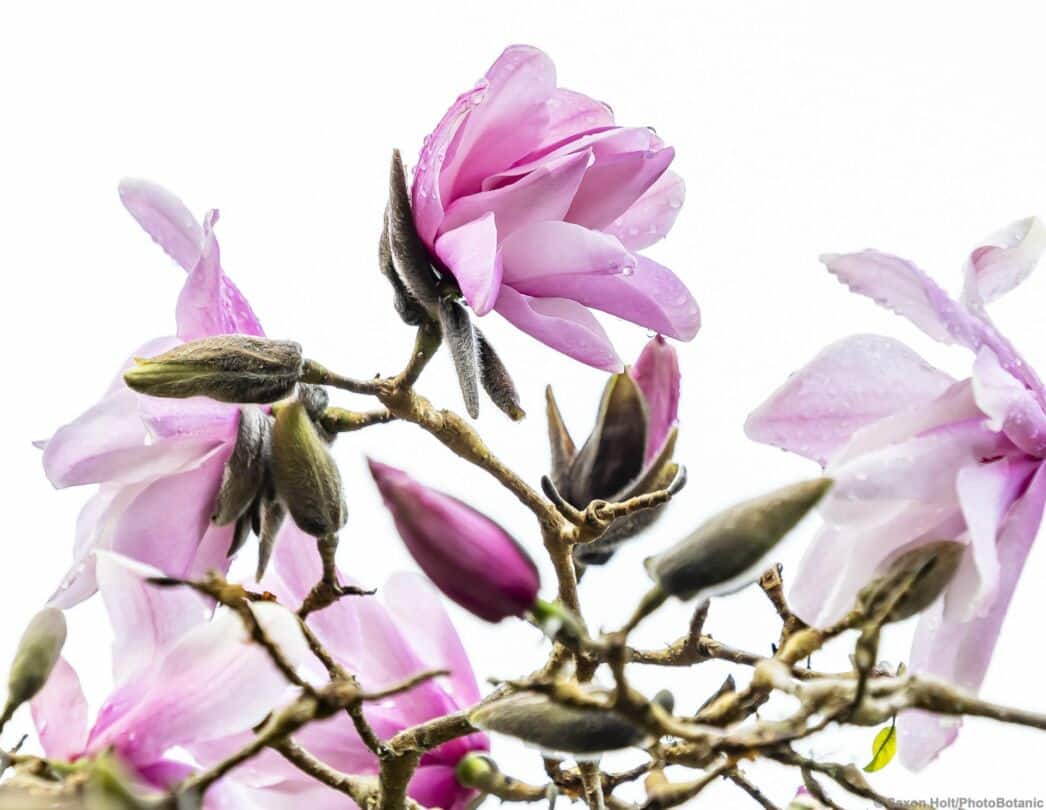
This photos of Magnolia dawsoniana was created from within a much larger image of a large tree flowering in San Francisco Botanical Garden. Let’s see how I got to this crop.
SFBG has the largest collection of Magnolia trees on the West Coast and many are quite big, making it difficult to capture a flower closeup. However that limitation creates an opportunity to create striking silhouettes looking up to the sky from underneath the tree. The huge, blowsy flowers on the tips of twisting branches offer any number of compositions – once you make strong use of the cropping tool.
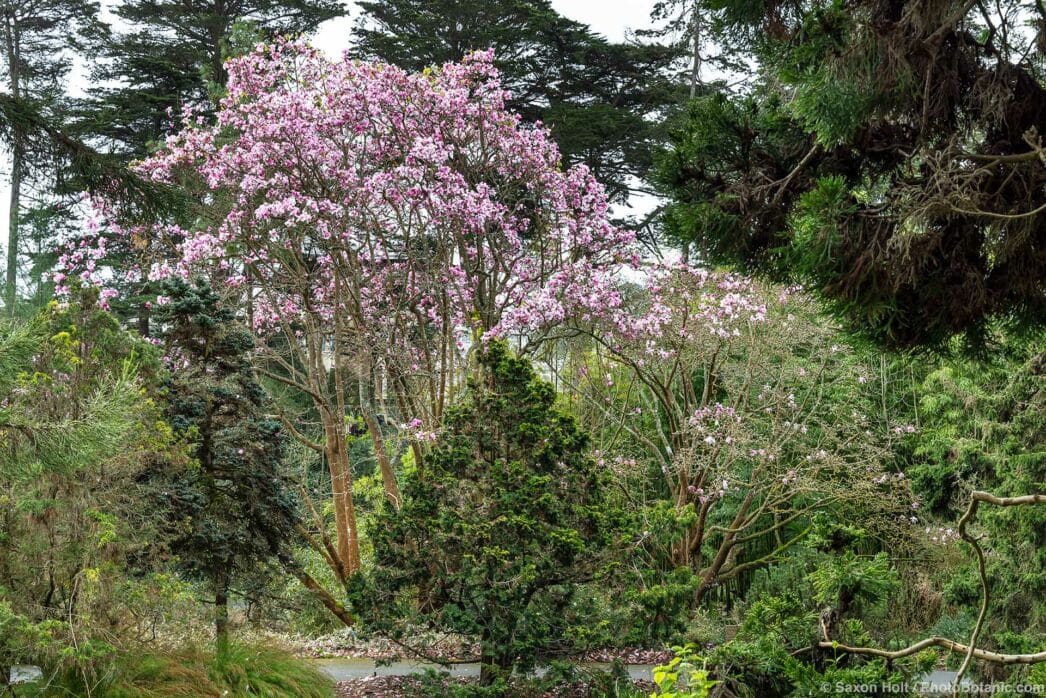
Magnolia trees flowering San Francisco Botanical Garden
A strong composition is one that uses the entire frame, however you chose to define those edges, and fills that frame completely. Filling the frame is a key concept in composition and runs through all the ebook lessons. Cropping allows you to be very precise in filling the frame.
Let’s take this photo step by step explaining how and why I decided to crop each edge. As soon as I looked up into the sky from under the magnolia I saw possibilities, and took the original image knowing it would allow for lots of possibilities later.
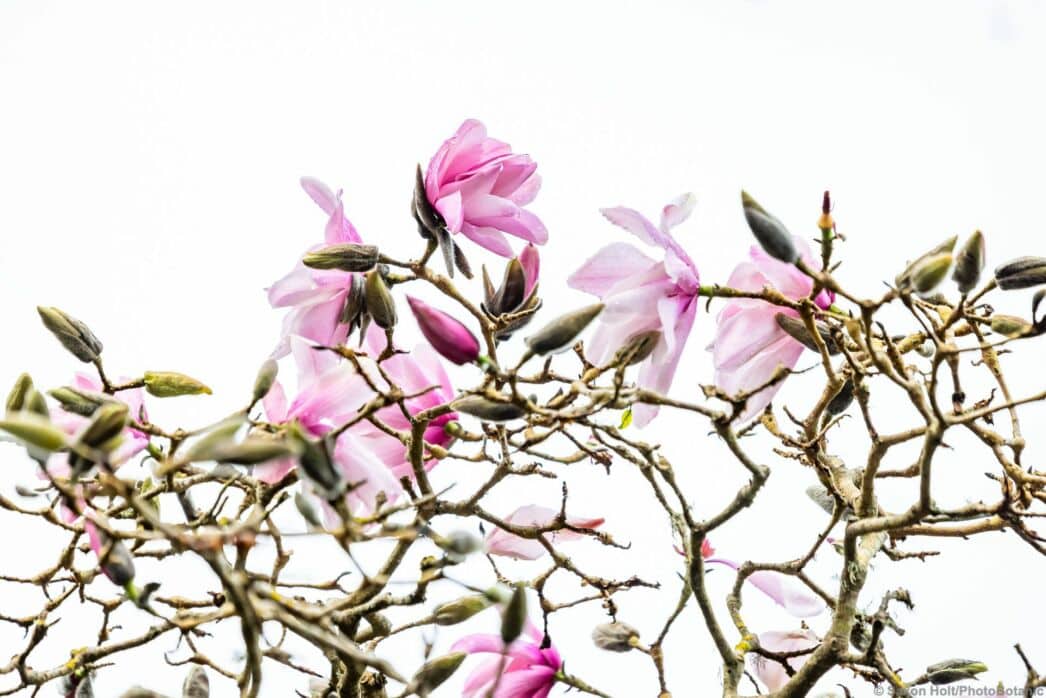
Cropping how-to – Magnolia dawsoniana. Uncropped original
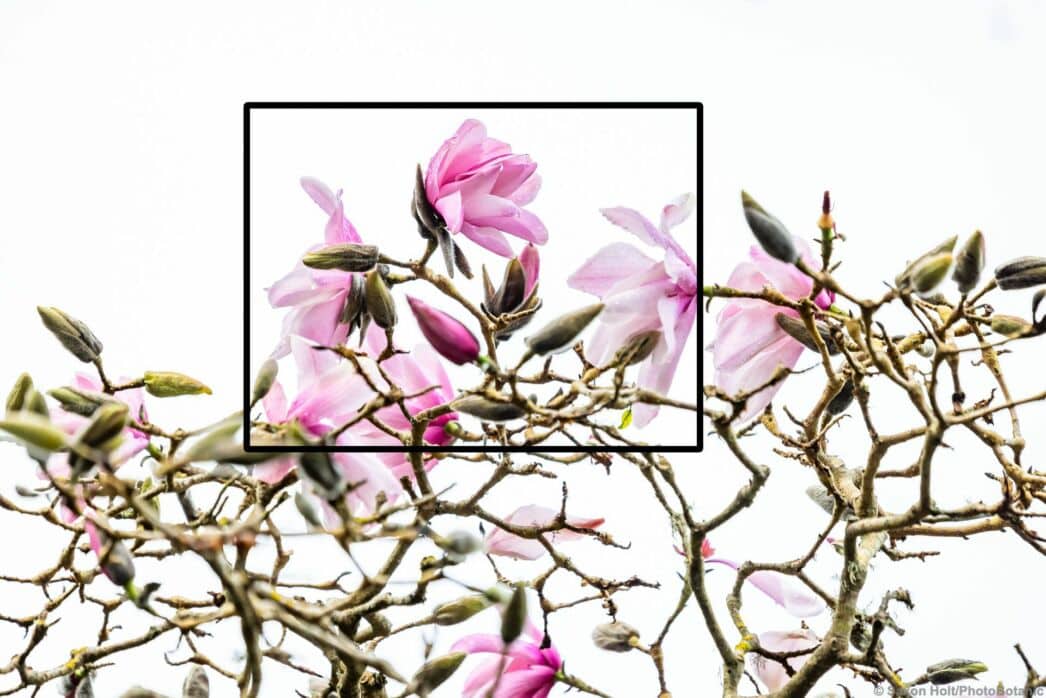
Cropping how-to – Magnolia dawsoniana; cropping lines
I shoot raw format with a Canon R5 and the file are huge, sometimes topping out over 60MB with 8192 x 5454 pixels. Given that I typically use a 1080 x 1350 image for Instagram, that potentially slices up more than 24 completely different images from one file – with zero loss of quality. Cropping makes it fun and easy to make strong compositions.
I do all my basic post production on a large monitor using Adobe Bridge in Camera Raw, where the crop tool allows very precise edges. I decided on the final crop: 3493 x 2703 pixels, moving each edge in and out to compose a pleasing image that fills the frame in a very controlled composition.
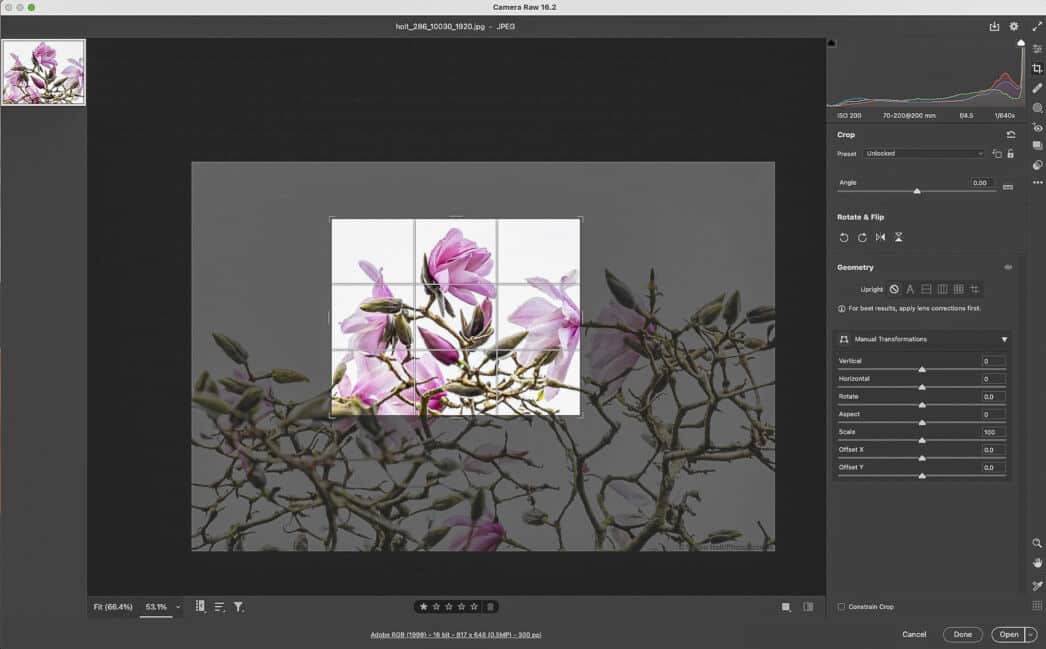
Magnolia photo cropped in Adobe Bridge Camera Raw
The cropping process revealed this nice curve at the bottom of the frame that serves to anchor the main flower.

Cropping how-to – Magnolia dawsoniana; cropping lines – arch callout
I then determined the right edge by bringing the edge snug behind the inward facing flower. To my eye this produces an edge that serves as a visual stop AND creates small white spaces within the frame.
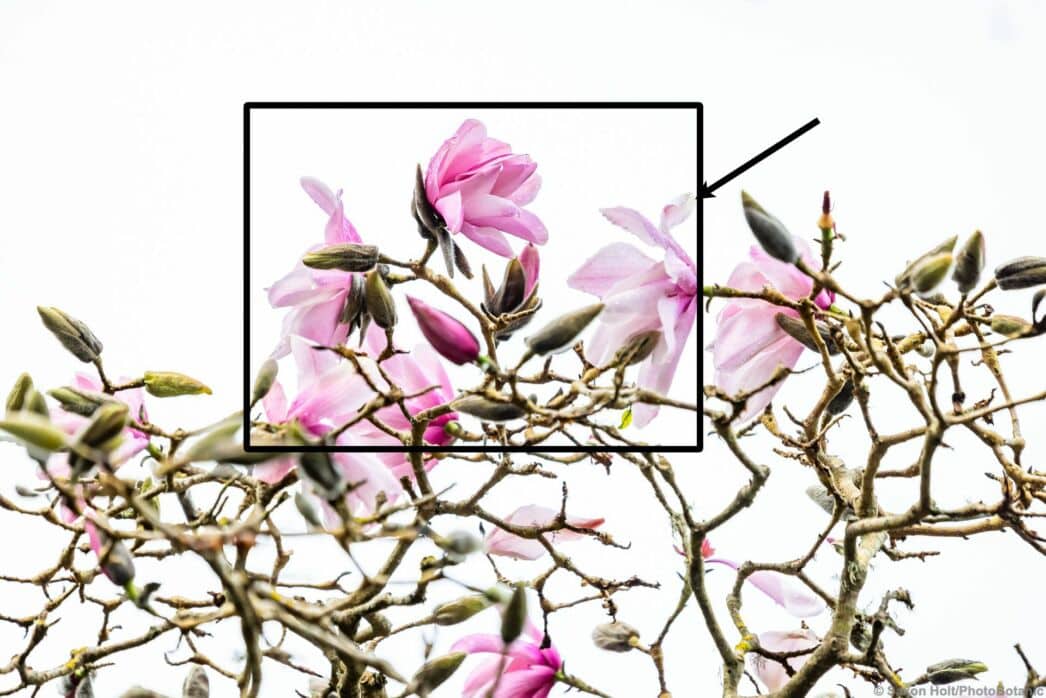
Cropping how-to – Magnolia dawsoniana; cropping lines – right side stopping point
Creating precise spaces within the frame is key to many compositions, I think of spaces as shapes, pieces of a jigsaw puzzle in a frame. Creating spaces, making these jigsaw pieces is exactly what determined the top and left crop edges.
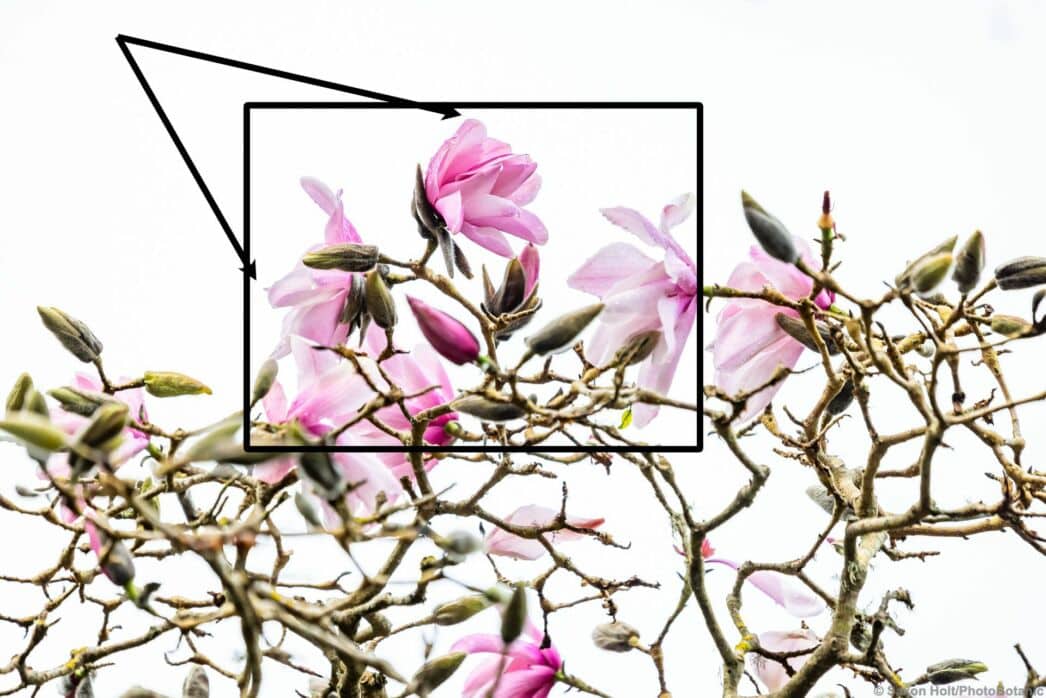
Cropping how-to – Magnolia dawsoniana; cropping lines – spacing callouts
Note the gap between the flowers and the edge of the frame are approximately equal and the resulting negative space (the empty white areas) have a pleasing balance. Abstractly, what I have created is series of white spaces throughout the very controlled, very carefully cropped frame.

A very pleasing, precise composition with dynamic lines, interlocking spaces, showcasing an incredibly beautiful flower, eh ?
Cropping is just one of the concepts in the e-books – for sale in our store.






Leave A Comment